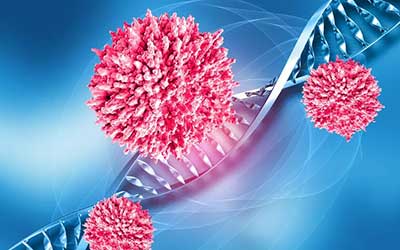Date: 27/02/2023
Relevance: GS-3: Science and Technology- Developments and their Applications and Effects in Everyday Life; Biotechnology, Genetic Therapy.
Key Phrases: Genetic Engineering, Protein Nanoparticle, mRNA, Crispr, DNA, Limitations of Delivery, Cancer Treatment, Genetic Therapy.
Context:
- Recently, A biotech company called Aera Therapeutics has unveiled a type of protein nanoparticle that can be used to deliver all sorts of genetic medicines around the body.
Key Highlights:
- Some methods avoid the delivery problem altogether by taking cells out
of the body, editing them in a lab, and giving them back to the patient.
- But that strategy is lengthy, expensive and tough on patients.
What is Genetic Therapy?
- Gene therapy is a technique that modifies a person’s genes to treat or cure disease.
- Gene therapy products are being studied to treat diseases including cancer, genetic diseases, and infectious diseases.
- Not all medical procedures that introduce alterations to a patient's genetic makeup can be considered gene therapy.
- Gene therapies can work by several mechanisms:
- Replacing a disease-causing gene with a healthy copy of the gene
- Inactivating a disease-causing gene that is not functioning properly
- Introducing a new or modified gene into the body to help treat a disease
What are the limitations of present Genetic Therapy?
- The presently available genetic therapy technologies can only fix the
genome in reachable parts of the body, and right now, reach is very limited.
- The liver, eyes and blood are the main places where cures might be possible.
- The fundamental issue with genetic medicines is that our bodies have
evolved to keep bad things out of our cells.
- That’s great for staving off viruses or other pathogens, but also makes it incredibly hard to sneak a medicine in.
- Scientists have been stuck using the same kinds of packaging for
technologies like mRNA or Crispr or DNA.
- They largely rely on viral vectors, which are basically hollowed out shells of a virus, and lipid nanoparticles, which can be thought of as fatty bubbles that encase genetic material.
- But they can only efficiently deliver to certain Zip codes - with a few exceptions, lipid nanoparticles’ routes are largely limited to the liver and eyes, for example.
- These have other limitations, for example how much cargo they can
hold. Some genes for fixing the diseases are too big to fit inside a virus.
- It can be tough to squeeze the instructions for making Crispr tools into a usable lipid nanoparticle.
How will Aera's New Protein Nanoparticle be helpful?
- The Aera is capitalizing on a recent discovery about a class of human proteins that are relics of viruses that infected humans ages ago.
- One of these proteins assembled into a protein shell of a virus particle that stored the RNA needed for making more copies of itself.
- Massachusetts Institute of Technology scientist Feng Zhang saw in the discovery an opportunity to exploit the system to deliver genetic material of his choice.
- His lab experimented on the human genome for other proteins that assemble into protective shells and probed whether they were capable of transferring RNA.
- In 2021, they showed that one of the proteins, called PEG10 could
be repurposed to deliver gene-editing tools.
- That work became the foundation for Aera.
Way Forward:
- If Aera succeeds, the capsid packages could deliver gene therapies to all sorts of places.
- So far, around 50 of these self-assembling proteins have been found, and Akinc believes more are likely out there waiting to be discovered.
- The capsids these proteins form come in a range of sizes, meaning some might be better suited for slipping across the blood-brain barrier, for example, while others might be good for packing in larger pieces of genetic material.
- Scientists have gotten very good at engineering proteins to do specific
jobs, so it’s reasonable to think Aera researchers could engineer the
capsids to travel to specific organs or tissues.
- Currently, the company is prioritizing getting to the brain, heart and muscles, all areas where genetic therapies would open a new era of medicine.
- Since these proteins are already floating around in our bodies, the hope is that they will not trigger an immune reaction.
- The technology is still several years away from being used in an
actual drug.
- But regardless of whether Aera succeeds at turning any of this into something commercially viable, the industry should take note.
Conclusion:
- After some 20 years of incremental progress, the millions of people with
genetic diseases need more fresh thinking, not more of the same.
- Therefore, this is a welcome research that can be helpful for the upcoming revolution in genetic engineering.
Source: Live-Mint
Mains Question:
Q. What is Genetic Therapy? Briefly, discuss the advantages and the associated limitations of the present delivery mechanism of Genetic therapy. (250 Words).







